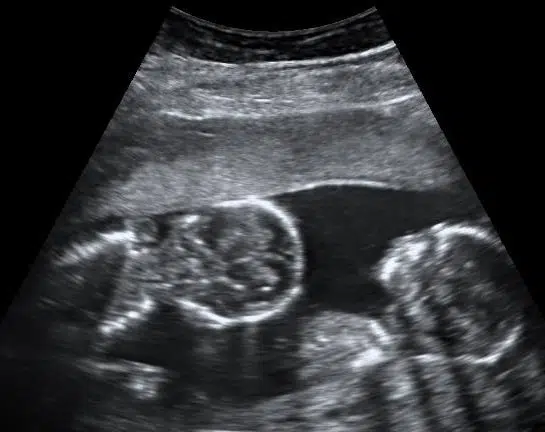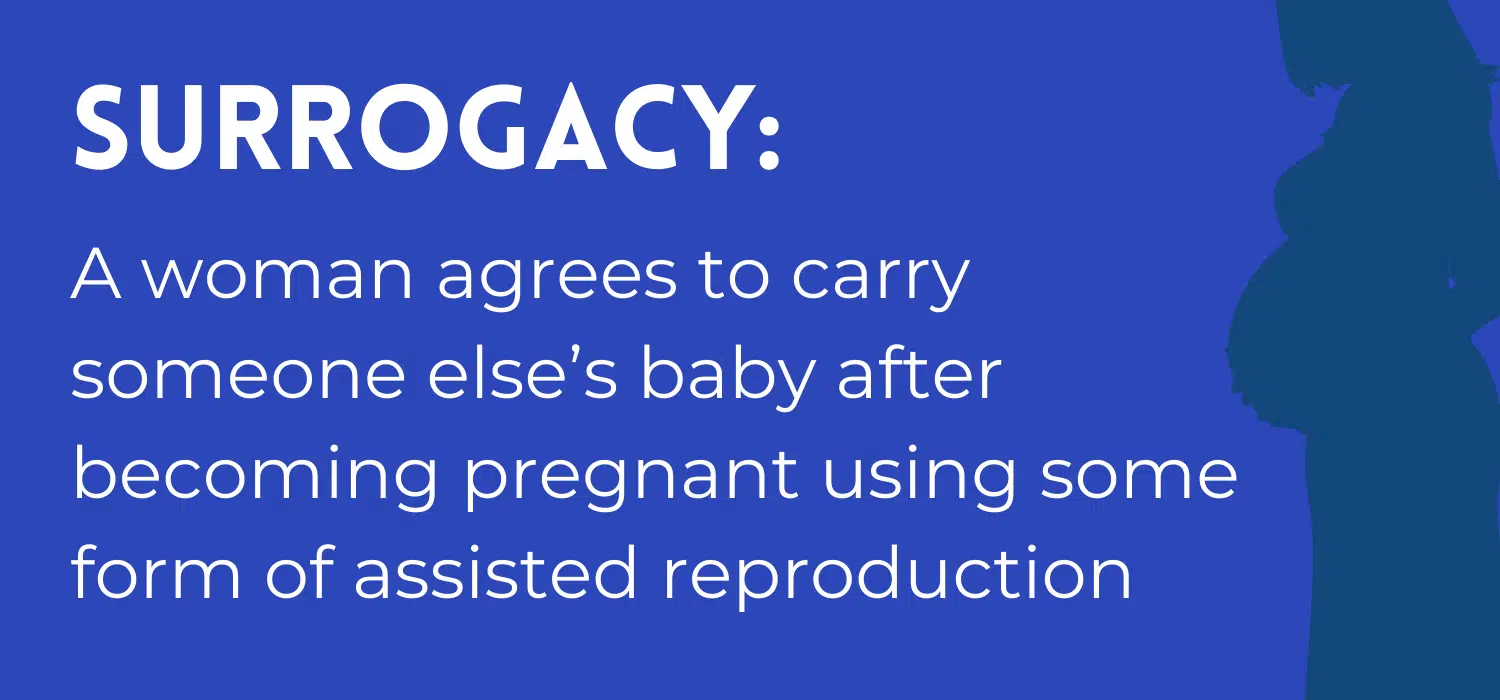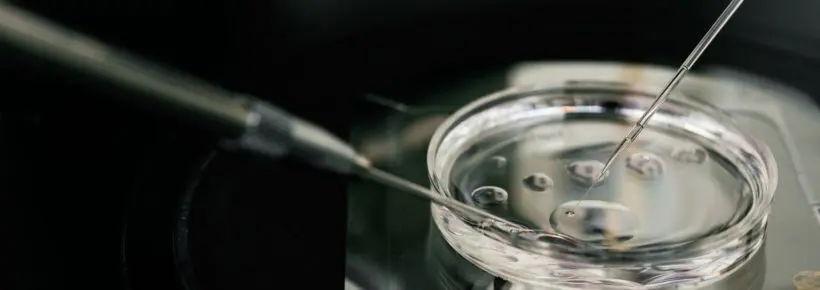In essence, [surrogacy] is the ultimate manifestation of the neoliberal project of capitalist commodification of all life to create profit and fulfill the narcissistic desires of an entitled elite.
~Kathleen Sloan, director of the Connecticut chapter of the National Organization for Women.1
What Is Surrogacy?
Surrogate motherhood is the oldest form of assisted reproduction. Historians say that it was practiced in several ancient societies. It was typically used to work around laws allowing a husband to divorce his wife due to her alleged infertility.2
A surrogate mother is a woman who agrees to carry someone else’s baby. The surrogate becomes pregnant using some form of assisted reproduction. Usually, surrogates use in vitro fertilization (IVF) or artificial insemination. The surrogate’s baby usually undergoes prenatal genetic diagnoses (PGDs) early in the pregnancy. If the baby is found to be healthy, she carries it to term and delivers the baby. After birth, she turns the baby over to the adoptive parents.
Those who promote surrogacy say that it allows several groups of people to have children when they otherwise could not. These include couples who have problems with infertility or couples who do not want to pass a genetic defect or health condition on to the child. There are also cases when the risk of pregnancy is too high for the intended mother. Finally, homosexual couples and single men and women who want a child may also opt for surrogacy.
Rarely mentioned is the increasingly widespread practice of rich couples who hire surrogates in poor countries simply to avoid the inconvenience of pregnancy. In other words, these couples are able to carry a pregnancy themselves, but instead “rent a womb” from another woman for convenience’s sake.
There are two general classes of surrogacy procedures:
- Traditional surrogacy, also referred to as “genetic,” “straight,” “partial” or “natural” surrogacy. Using artificial insemination, the surrogate mother’s egg is fertilized by the sperm of the intended father, who may be an unrelated donor. This means that the resulting child possesses the intended father’s DNA but not the intended mother’s.3
- Gestational surrogacy, also called “full” or “host” surrogacy. An embryo is produced through in-vitro fertilization (IVF) and is then implanted into the surrogate mother. The egg and sperm may come from a number of donors. Both the egg and the sperm could come from any combination of donors or intended parents. A donor embryo would come from a donated egg and donated sperm. In this case, the resulting child would be unrelated to either of the intended parents. In a “total” surrogacy, the egg and the sperm are chosen from a donor bank. This means that the adoptive parents are unrelated to the resulting child.4
The process may be “altruistic,” where the surrogate mother is not paid for her services. It can also be “commercial,” where she is paid (usually by an agency) and agrees to bear the child as a form of “employment.” In essence, the woman is renting out her womb to bear a child.
The Ethics of Surrogacy
There is no doubt that there are many people who long for a child but cannot have one for a variety of reasons. Unfortunately, the world has many times fallen into the trap of transforming human desire into a “fundamental human right.” This usually results in disastrous consequences to the society at large.
Surrogacy is an excellent example of this principle.
Ethical Issue #1: Abuse of the Surrogate Mother
Most states have embraced commercial surrogacy. This gives some people the impression that the rest of the world approves of it as well.
This is far from the case.
Several European nations have banned surrogacy due to widespread abuse and exploitation, particularly of poor women hired as surrogates. Additionally, the Charter of Fundamental Rights of the European Union bans using one’s body for financial gain. Thus, the EU has banned paid surrogacy (however, altruistic surrogacy is still legal in some European nations).
India is a famous example of a popular destination for surrogacy. India has banned paid surrogacy, leaving altruistic surrogacy legal for Indian couples. However, non-Indians are not allowed to seek surrogacy in India. New Delhi’s Center for Social Research reported, “Surrogacy degrades a pregnancy to a service and a baby to a product.”5
Like India, Thailand, too, banned surrogacy for international intended parents. It also has many restrictions even for Thai residents. Cambodia, too, has placed regulations on its surrogacy.
Lesbian writer Julie Bindel identifies the crux of the problem. She says:
The accelerating boom in surrogacy for gay couples…represents a disturbing slide into the brutal exploitation of women who usually come from the developing world and are often bullied or pimped into selling their wombs to satisfy the selfish whims of wealthy gay or lesbian westerners…. This cruelty is accompanied by epic hypocrisy. People from Europe and the USA who would shudder at the idea of involvement in human or sex trafficking have ended up indulging in a grotesque form of “reproductive trafficking.”6
It goes without saying that Bindel’s words ring true for all couples, not just LGBT people.
Whatever form it takes, surrogate motherhood is a form of “reproductive prostitution.”7 In street prostitution, “the women sells or rent her body or body parts, the relation is impersonal, she is to do what she is told, her value or usefulness comes from her function, she is to leave when she is told, and if there is a pimp, he gets a share of money.”7 The only difference with surrogacy is that the “pimp” has a medical or law degree. As Kathleen Sloan’s quote above shows, even some of the most extreme pro-abortion feminists recognize the potential for exploitation of women who agree to become surrogate mothers.
The practice of surrogacy has raised a dense thicket of legal and psychological questions centered on the surrogate mother. Is she an employee, a prostitute, or a slave? And what does she feel about relinquishing a child she has nurtured for nine months? Most studies claim that feelings of regret among surrogates are rare, but the high-profile custody battles between surrogates and intended parents (remember the Mary Beth Whitehead and Anna Johnson cases?) seem to indicate that there is a lot that is not being revealed by the medical establishment.
Marketing expert Thomas Frank summarizes the primary problems inherent in such an arrangement:
Surrogate motherhood has been the subject of much philosophical and political dispute over the years. To summarize briefly, it is a class-and-gender minefield. When money is exchanged for pregnancy, some believe, surrogacy comes close to organ-selling, or even baby-selling. It threatens to commodify not only babies, but women as well, putting their biological functions up for sale like so many Jimmy Choos [expensive women’s designer shoes]. If surrogacy ever becomes a widely practiced market transaction, it will probably make pregnancy into just another dirty task for the working class, with wages driven down and wealthy couples hiring the work out because it’s such a hassle to be pregnant.8
Mr. Frank identifies one of the problems surrounding surrogate motherhood that most people do not even think about — the exploitation of poor women, both in this nation and in others.
One of Gandhi’s “Seven Deadly Sins” was “commerce without morality.” He would be grieved to learn that his home nation of India became known as the “surrogacy hub” of the world because surrogacy costs were so low there. For years, poor Indian women were exploited by rich Western couples, making surrogacy a multi-billion-dollar industry in that nation. Because of rampant abuses, the Indian government banned the practice of commercial surrogacy, while allowing it to continue only for closely related relatives. This move, of course, raised howls of protest from homosexuals who want children, and from some feminists who trotted out the old, tired slogan that women should be able to do whatever they want with their own bodies — even if they are being ruthlessly abused and misused.9
Interestingly, most contracts between the surrogate and the husband and wife insist that the surrogate abort the child if genetic tests show abnormalities unacceptable to the husband and wife ― in direct conflict with the surrogate woman’s alleged “right to choose.”10 Proponents of “surrogate motherhood” deny any infringement of rights, of course, because they say that the baby in question is mere property under contract.
Ethical Issue #2: The Interests of the Child
Many surrogacy advocates have asserted that there is a “right to a child.” This reduces children to a commodity that can be bought and sold, which grossly violates their human dignity. Donum Vitae teaches, “A true and proper right to a child would be contrary to the child’s dignity and nature. The child is not an object to which one has a right, nor can he be considered as an object of ownership: rather, a child is a gift, ‘the supreme gift’ and the most gratuitous gift of marriage.”11
God designed the family in a way that serves the best interests of the child. An abundance of peer-reviewed research confirms that this arrangement is the most advantageous for children physically, mentally, emotionally, and spiritually. British author Christine Whipp said:
My existence owed almost nothing to the serendipitous nature of normal human reproduction, where babies are the natural progression of mutually fulfilling adult relationships, but rather represented a verbal contract, a financial transaction and a cold, clinical harnessing of medical technology.
The Vatican’s Congregation for the Doctrine of the Faith addressed whether “surrogate motherhood” was moral in its document Donum Vitae:
No, for the same reasons which lead one to reject artificial fertilization: For it is contrary to the unity of marriage and to the dignity of the procreation of the human person. Surrogate motherhood represents an objective failure to meet the obligations of maternal love, of conjugal fidelity and of responsible motherhood; it offends the dignity and the right of the child to be conceived, carried in the womb, brought into the world and brought up by his own parents; it sets up, to the detriment of families, a division between the physical, psychological and moral elements which constitute those families.
For the reasons already described, the Catechism of the Catholic Church reiterates this principle: “Techniques that entail the dissociation of husband and wife, by the intrusion of a person other than the couple (donation of sperm or ovum, surrogate uterus), are gravely immoral” (¶2376).
There are many modern medical procedures that help married couples to overcome infertility, and a number of these are approved by the Church. The standard used by theologians is that these procedures must respect the human dignity of all life. Further, the “goods of marriage” (partnership, permanence, fidelity, and fruitfulness) must remain intact.12
Although it may appear at first glance that surrogacy should at least always be permitted for married couples, this is not the case. When one examines the components of the overall process of surrogacy, it is evident that Catholics, married or not, may not participate in it in any capacity.
All forms of surrogacy require artificial insemination or in vitro fertilization, which the Church teaches are in themselves immoral. Regardless of the type of surrogacy chosen, the child is conceived outside of the natural conjugal act. This means that, regardless of how loving the rest of the surrogacy process is, it will continue to be immoral.
Artificial Insemination (AI)
Traditional surrogacies involve the use of one of several different AI surgical procedures. From a technical standpoint, there are only two general types of AI: AI by husband (AIH) and AI by donor (AID).

Artificial insemination
The Catholic Church has condemned artificial insemination repeatedly because it clearly violates the “goods” of marriage as described above. In 1951, Pope Pius XII stated:
To reduce the common life of a husband and wife and the conjugal act to a mere organic function for the transmission of seed would be but to convert the domestic hearth, the family sanctuary, into a biological laboratory. Therefore…we expressly excluded artificial insemination in marriage.13
Donum Vitae addressed this matter again in greater detail in 1987, flatly stating that whenever a technical means
…facilitates the conjugal act or helps it to reach its natural objectives, it can be morally acceptable. If, on the other hand, the procedure were to replace the conjugal act, it is morally illicit. Artificial insemination as a substitute for the conjugal act is prohibited by reason of the voluntarily achieved dissociation of the two meanings of the conjugal act. (¶6)
All AI procedures also require masturbation by the donor, which in itself is an intrinsically disordered act.14
In-Vitro Fertilization
The Catechism of the Catholic Church explains that in-vitro fertilization and similar reproductive technologies are morally unacceptable:
They [certain artificial reproductive technologies] dissociate the sexual act from the procreative act. The act which brings the child into existence is no longer an act by which two persons give themselves to one another, but one that “entrusts the life and identity of the embryo into the power of doctors and biologists and establishes the domination of technology over the origin and destiny of the human person. Such a relationship of domination is in itself contrary to the dignity and equality that must be common to parents and children. (¶2377)
In addition to these problems, IVF usually involves the fertilization of multiple embryos. This means that a woman may be pregnant with multiple children. They then selectively abort “extra” embryos to make room for one or two. Medical professionals refer to this process as “pregnancy reduction.”

Twins at 15 weeks. By Mikael Häggström, used with permission
Hold On. Doesn’t the Consent of the Surrogate Make It Okay?
Despite the ethical issues, some push for surrogacy. An argument for surrogacy could be that if the surrogate consents to it, it is not exploitation of the surrogate. Consent is not the determiner of whether something is morally right.
Catholic Answers describes at length why consent is not what determines whether something is good or acceptable. Someone may consent to drinking poison, but that does not make the action acceptable. If we apply this principle to actions that directly affect others, we see the same results. For example, take two boxers. Even if one boxer were to say to the other that he consents to being beaten within an inch of his life, this would not make the action morally permissible.
Catholic Answers sums it up well:
“Sometimes people consent to things that are bad for them. But in such examples, consent is not what is driving the moral evaluation. What’s in the driver seat is a more fundamental underlying moral theory that says these actions are bad and thus need to be avoided. If there is a more fundamental framework that does the evaluative work, then it follows that consent by itself isn’t sufficient to justify some activity.”
Thus, we can see that consent alone does not make actions moral or acceptable, including surrogacy.
Final Thoughts: The Church Offers Hope
Unfortunately, due to our fallen human nature, every field related to human reproduction has been grossly exploited. The rule seems to be: If it can be abused, it will be abused. We have seen this dictum played out with contraception, abortion, population control and most of the forms of assisted reproduction. Surrogacy is no exception to this principle.
There is undoubtedly an allure to surrogacy. Despite this, we must take into consideration its many drawbacks. Most importantly, it commercializes human life, undermines human dignity and dehumanizes our societies.
This is certainly unfortunate news for couples who cannot have children on their own. But we must realize if we do not preserve human dignity, we cause incalculable harm. We harm not only our societies, but we harm our families and ourselves.
Jesus Christ and His Church feel acutely the heartbreak caused by infertility.15 Nothing can compare to the suffering of couples who long to have a child but cannot. Donum Vitae clearly acknowledges the desire for a child: “On the part of the spouses, the desire for a child is natural: it expresses the vocation to fatherhood and motherhood inscribed in conjugal love. This desire can be even stronger if the couple is affected by sterility which appears incurable” [¶8].
The desire to have a child is natural and laudable. However, this does not mean that a child can be obtained by immoral means.
Infertile Catholic couples should instead look into the rapidly‑growing field of alternative procedures that can actually restore fertility in most cases.
Resolve is the national infertility counseling organization. Its executive director said that various micro‑surgery techniques can restore fertility to about 70% of infertile women of reproductive age.15 Dr. Joseph Ballina, Director of the Laser Research Institute of New Orleans, has reported an 80% success rate in repairing blocked or cut Fallopian tubes. After surgery, 80% of these women later become pregnant.17
Dr. Thomas Hilgers, director of the Pope Paul VI Institute for the Study of Human Reproduction in Omaha, Nebraska, has developed a method for dealing with the problems of repetitive miscarriage and infertility, based upon more than thirty years of observations of both normal and abnormal fertility cycles. NaProTECHNOLOGY (Natural Procreative Technology) uses fertility care, not fertility control, with both medical and surgical techniques employed to heal the body. For more information, visit the NaProTECHNOLOGY website and the Saint Paul VI Institute’s website.
Finally, if a couple suffering from infertility has explored every licit avenue and still cannot conceive, they may find substantial comfort in the teachings of the Church. They will have the satisfaction of knowing that they have tried everything they could within God’s will.
Pope St. John Paul said:
Even when procreation is not possible, conjugal life does not for this reason lose its value. Physical sterility in fact can be for spouses the occasion for other important services to the life of the human person, for example, adoption, various forms of educational work, and assistance to other families and to poor or handicapped children.18
The plight of the couple may certainly greatly ameliorate the intense and similar suffering of children who do not themselves have parents. Dignitatis Personae tells us:
In order to come to the aid of the many infertile couples who want to have children, adoption should be encouraged, promoted and facilitated by appropriate legislation so that the many children who lack parents may receive a home that will contribute to their human development.” (¶13)
This article was originally published in November 2021 by Dr. Brian Clowes and most recently updated in June 2023 by Marisa Cantu.
+ Endnotes
[1] Kathleen Sloan, director of the Connecticut chapter of the National Organization for Women, during her testimony given to a Minnesota state commission studying surrogate motherhood. Quoted in Father Tad Pacholczyk, Director of Education for the National Catholic Bioethics Center. “Making Sense of Bioethics: The Multiple Moral Problems of Surrogacy,” October 2016.
[2] Nicholas Postgate. Early Mesopotamia Society and Economy at the Dawn of History [Routledge, 1992], page 105.
[3] “What Is Traditional Surrogacy?” What is Traditional Surrogacy, and How Does It Work? – American Surrogacy. Accessed June 1, 2023. https://www.americansurrogacy.com/surrogacy/traditional-surrogacy.
[4] “Gestational Surrogacy: What Is It, Process, Risks & Benefits.” Cleveland Clinic. Accessed June 1, 2023. https://my.clevelandclinic.org/health/articles/23186-gestational-surrogacy.
[5] “Surrogate Motherhood — Ethical or Commercial” [New Delhi: Center for Social Research], 2014. Page 4.
[6] Julie Bindel. “Surrogacy and Gay Couples.” New Feminism website, June 2, 2015.
[7] Interestingly, dissenter Thomas A. Shannon used the term “reproductive prostitution,” writing for Conscience, the journal of the rabid pro-abortion group “Catholics” for a Free Choice. He continues:
The surrogate is picked on the basis of desirable qualities — appearance, health, and fertility — is paid to provide her body for a period of time, and then she is to disappear. While the context of surrogacy may be different than in prostitution — a clinic or an attorney’s office — the two phenomenon [sic] overlap.
Thomas A. Shannon. “Ethical Issues in Artificial Reproduction.” Conscience, September/October 1989. Volume X, Number 5, pages 12 and 13.
[8] Thomas Frank. “Rent-a-Womb Is Where Market Logic Leads.” The Wall Street Journal, December 10, 2008.
[9] “India Unveils Plan to Ban Surrogacy.” BBC News, August 25, 2016. The author also discussed this practice extensively with medical doctors in Bangalore in November 2016.
[10] Donald DeMarco. Manassas, Virginia: Trinity Communications, 1987, page 181.
[11] The complete passage reads:
A true and proper right to a child would be contrary to the child’s dignity and nature. The child is not an object to which one has a right, nor can he be considered as an object of ownership: rather, a child is a gift, “the supreme gift” and the most gratuitous gift of marriage and is a living testimony of the mutual giving of his parents. For this reason, the child has the right to be the fruit of the specific act of the conjugal love of his parents; and he also has the right to be respected as a person from the moment of his conception. (II,8)
[12] The “goods of marriage” were first outlined by Saint Augustine in De Bono Coniugali (“Of the Good of Marriage”) in AD 401. Saint Thomas Aquinas further developed them in his Summa Theologiae (Supplementum, Q. 49). More currently, Pope Pius XI addressed them in his important encyclical Casti Connubii in 1930. See also the Catechism of the Catholic Church on the foundation of the Church’s teaching on marital unity (¶ 1643–1654).
[13] Pope Pius XII, address to the Italian Union of Midwives, October 21, 1951. Text printed in The Catholic Mind [Volume 50, 1951], page 61.
[14] Donum Vitae [“Instruction on Respect for Human Life in Its Origin and on the Dignity of Procreation: Replies to Certain Questions of the Day”], Congregation for the Doctrine of the Faith, February 22, 1987 (¶6):
Masturbation, through which the sperm is normally obtained, is another sign of this dissociation: even when it is done for the purpose of procreation, the act remains deprived of its unitive meaning: It lacks the sexual relationship called for by the moral order, namely the relationship which realizes ‘the full sense of mutual self-giving and human procreation in the context of true love.
See also Gaudium et Spes (¶51) and the Catechism of the Catholic Church (¶2352).
[15] For other documents that offer guidance on the teachings of the Catholic Church regarding infertility, see “Natural Family Planning: Infertility” and John M. Haas, Ph.D., S.T.L. “Begotten Not Made: A Catholic View of Reproductive Technology,” both on the website of the United States Conference of Catholic Bishops (USCCB).
[16] Claudia Wallis. “The New Origins of Life.” Time Magazine, September 10, 1984, page 40.
[17] “In Vitro Lab Approved.” National Right to Life News, January 1980, page 23.
[18] Pope St. John Paul II, Apostolic Exhortation Familiaris Consortio, 14: AAS 74 (1982) 97.
Related Content






















The Bible records a gestational surrogate. The Son of God in embryonic form implanted Himself in the uterus of a young virgin woman named Mary, and nine months later, the child was named Jesus.
Thank you for your feedback.
The Incarnation described in the Bible is not a gestational surrogacy. Christ is both fully God and fully human. While the exact method is a mystery, the fact that Mary conceives of the Holy Spirit is not. Christ was truly conceived. Mary is Christ’s mother not simply a surrogate for an embryonic God.
HLI Staff
So sad to think of all the babies thrown away with IVF. My wife and I struggled with infertility for a long time. Just when we had almost given up, we were blessed with a baby boy. We call him our miracle baby. It was tempting to try IVF, but we knew the church didn’t approve. It’s hard when society teaches one thing and we must stand firm with what’s right. Thanks HLI for helping us understand this cruel practice.